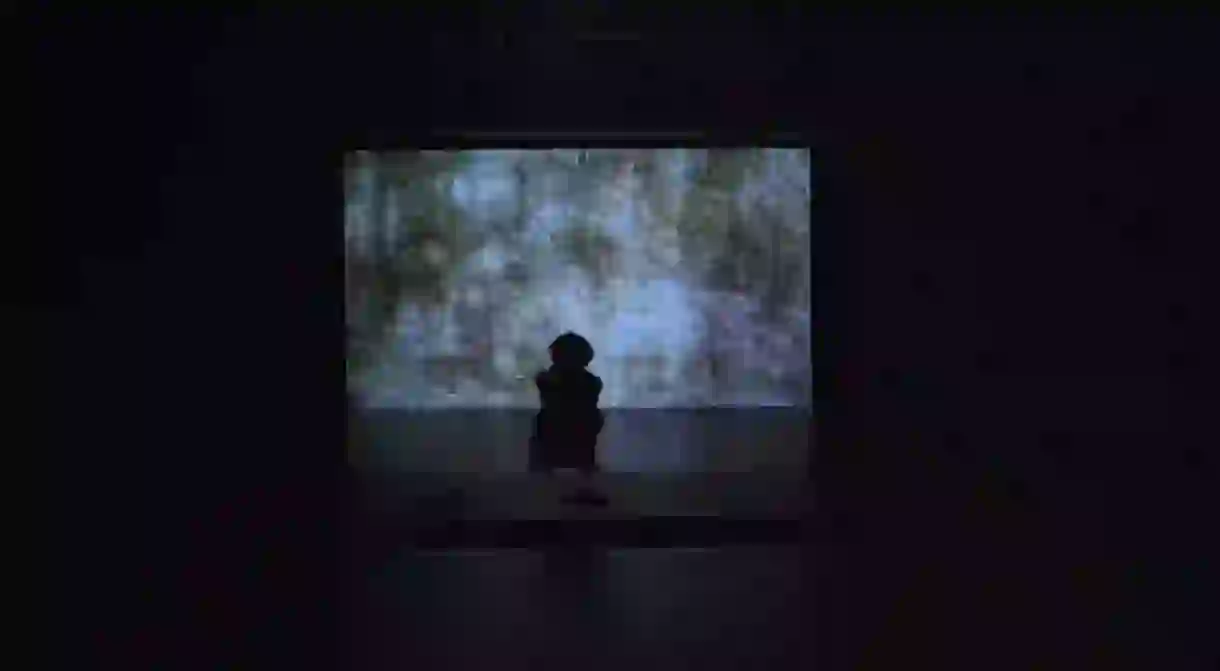Hong Kong's Empty Gallery Explores The Value Of Art In The Dark

Located on the south side of Hong Kong Island, Empty Gallery is an unconventional exhibition space that favors darkness over light. While a dark exhibition space may initially sound impractical if not altogether contradictory, founder Stephen Cheng’s philosophy is rooted in a deeply insightful perspective of art appreciation.
Your philosophy as a gallerist turns the traditional “white cube” aesthetic on its head. Aside from a desire to distinguish your gallery from the others, what inspired you to embrace darkness over light?
I love being in the dark – not knowing, half dreaming – it makes you more sensitive and open to new experiences. You are more porous in the dark; more a part of the space; less fixed. There are a lot of great white cube galleries, but a lot of them feel like showrooms. Buying a piece of art is a transaction, but experiencing a work of art is a transmission. It’s the latter that inspired me to open a gallery.

At face value, a dark space contradicts the experience of looking at art. How do you feel the darkness enhances this experience? How and why do you feel it’s meaningful?
It heightens your senses – activates them so that you are aware of what you’re seeing, hearing, smelling, and so on. Tolstoy said, “A real work of art destroys, in the consciousness of the receiver, the separation between himself and the artist.” I think what he meant is that art is interactive and infectious.

Is there a cultural or a personal significance to darkness for you?
For me darkness is internal. When you close your eyes, you go in. What is so interesting is that instead of entering a claustrophobic space confined to the body, it is incredibly expansive in there.

What do you feel the role of the gallery is in art? How do you feel Empty Gallery realizes that role?
When you talk about a gallery, you are talking about the business of art. The role of a gallery is to support artists through discovering, showing, and selling their work. Empty Gallery is really no different in this way, except my emphasis is on the discovery and the showing, which I feel leads, in any case, to selling if you do it well.

What’s the layout of the gallery?
Empty Gallery is in an industrial building on the south side of Hong Kong Island right next to the Aberdeen fish market. You take the lift to the 19th floor. When the door opens, you find yourself in a dark stone cube vestibule. To your left, half of one side of the cube opens if you push it, and you enter the gallery.
There is a short journey before you arrive in the main gallery space. First, you pass through a chamber with a stone plinth, and the only window in the gallery allowing a shaft of light into the space. Then you follow a short corridor before arriving in the first big gallery space.

It’s basically one large room – the largest in the gallery. One of the walls in the main gallery space has a gap in it. If you pass through the gap you enter a double height space with a descending staircase. This leads you down to three further exhibition rooms on a lower level, including a small screening room. It is this lower level that was recently added to the gallery to allow for more programming flexibility.
What kind of art does your gallery exhibit? Do the artists you choose to represent and showcase align with your darkness concept?
It is more the work than the artist that must make sense in the space. Of course, moving image works; sound works; performances and such things work. I try to remain open to what is possible and what “fits” – otherwise I think it would be quite easy to end up pigeon-holed. In fact, what is happening and what is so exciting is that the boundaries between different “kinds” of art are blurring again.

Why did you choose to name your space ‘Empty’ Gallery?
Emptiness is related to darkness. It is also related to openness. In the end, for me, it is all about the experience of art.
Aside from the lighting aspect, is there anything else that you feel distinguishes Empty Gallery from all the others?
Yes. I have a digital post-production studio for film and animation above the gallery. It’s a small studio but with quite a lot of processing power. This is something the gallery is able to offer to artists, to realize new works using computer graphics, motion capture and other such technologies. It’s kind of the same way that other galleries may have print ateliers or other facilities attached to their operation.

Do you have plans to expand the gallery?
Not anytime soon. I would love to open a space in Silicon Valley and explore the possibilities of art and technology there. I mean as a two way street. Many artists I know are shy of tech and many tech friends of mine are shy of art. But in terms of a kind of wild and open-minded approach to the future, they should be best friends. We would all benefit greatly from that relationship.
Empty Gallery, 19/F, Grand Marine Center, 3 Yue Fung Street, Tin Wan, Hong Kong +852 2563 3396













